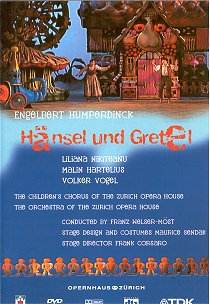 Composer: Enrico Caruso
Composer: Enrico Caruso
Works: Leoncavallo, Lasciati amar; De Crescenzo, Guardann’a luna; O’Hara, Your eyes have told me; Cottrau, Fenesta che lucive; Rossini, Cuius animam (Stabat mater); Faure, Les rameaux; Mascagni, Addio alla madre (Cavalleria Rusticana); Verdi, Oh mostruosa colpa (Otello); Tchaikovsky, Sérénade de Don Juan; Ricciardi, Amor mio; Valente, Manella mia; Faure, Les rameaux; Gartner, Trusting eyes; Ronald, Sérenade espagnole; Tosti, Parted; Verdi, La rivedrà (Un ballo in maschera); Verdi, Ò scherzo od follia (Un ballo in maschera); Alvarez, La Partida; Chapi, El milagro de la Virgen: Flores purisimas
Performers: Caruso (tenor), with the Victor Orchestra and the Metropolitan Opera Chorus
Recording: All tracks recorded 1913-1914 in New York, NAXOS 8.110726 [69.18]
Enrico Caruso remains an iconic figure in the pantheon of operatic voices, not merely for his phenomenal talent but for his role in bringing opera into the homes of the masses through the burgeoning recording industry of the early 20th century. This eighth volume of Caruso’s complete recordings encapsulates a pivotal moment in musical history, capturing the essence of a tenor whose powerful voice resonated across continents. The tracks included, recorded between 1913 and 1914, serve as a testament to his artistry during a time when recording technology was still in its infancy, requiring singers to adapt their performances for the constraints of the medium.
The interpretations presented are a fascinating blend of operatic fervor and the limitations imposed by early recording techniques. Caruso’s voice, at the age of 40, retains a youthful vigor and expressive quality; however, certain aspects of his interpretation, particularly the use of portamento, may appear excessive to contemporary listeners. In “Lasciati amar” by Leoncavallo, this stylistic choice, while historically relevant, introduces a touch of awkwardness that might distract from the emotional arc of the piece. There is a palpable intimacy in these recordings that transcends the mechanical limitations, with moments of vulnerability tempered by Caruso’s innate theatricality.
The orchestral accompaniments, though predictably less robust than modern standards, remain effective in supporting Caruso’s soaring lines. In particular, the duet from Verdi’s “Otello,” featuring the baritone Tita Ruffo, showcases an extraordinary interplay that rises above the constraints of the recording medium. The sheer intensity of their combined performance, especially in the climactic moments of “Oh mostruosa colpa,” not only highlights Caruso’s technical prowess but also reveals an emotional depth that resonates despite the acoustic challenges. The engineering of this NAXOS release provides a surprisingly clear listening experience, with surface noise kept to a minimum, allowing the listener to appreciate the nuances of Caruso’s phrasing and dynamic control.
Two interpretations of Faure’s “Les rameaux” are particularly noteworthy on this disc. The first, released solely in Europe, reveals Caruso’s ability to navigate the delicate balance between lyricism and emotional weight, while the second version, intended for both European and American audiences, amplifies this sensitivity. The subtlety of his phrasing in both renditions offers a glimpse into the tenor’s interpretative flexibility, a quality that stands in stark contrast to the more bombastic tendencies of his contemporaries.
This collection serves not only as an auditory archive of Caruso’s legacy but also as a pivotal reference point for understanding the evolution of operatic recording techniques. While it may lack the pristine clarity of modern productions, the emotional immediacy and historical significance of these recordings are undeniable. Caruso’s artistry continues to inspire and resonate, bridging the gap between the past and present in the world of classical music. The latest volume in this series will undoubtedly appeal to both ardent admirers of Caruso and those seeking to explore the depths of operatic history.



